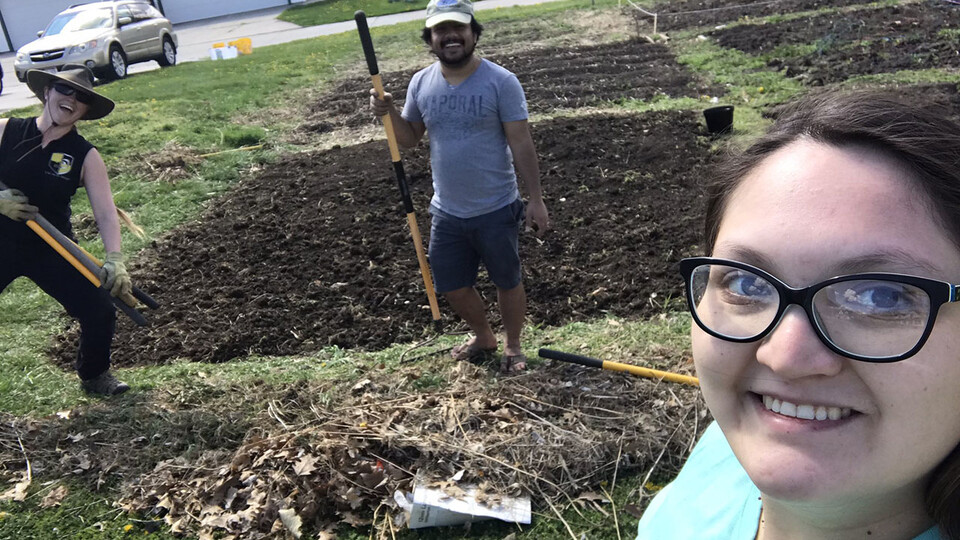Jun 14, 2021
By Ronica Stromberg | National Research Traineeship Program

In scientific terms, University of Nebraska–Lincoln doctoral student Rubi Quiñones is an outlier.
The computer science major knows 10 coding languages and four spoken languages — English, Spanish, Chinese and Korean. Since meeting and marrying her Bangladeshi husband at Nebraska, she has begun adding Bangla to the list.
Her research in computer science also sets her apart from colleagues.
“In the computer science department, I’m one of maybe three students who work with computer vision,” said Quiñones, who is in the National Science Foundation’s National Research Traineeship program. “Integrating that with plant phenotyping makes me the only person at UNL studying this, so my skills are specific, but they’re also wanted and necessary to make both fields better.”
Phenotypes are the traits of a plant that are physically measurable, such as height or leaf area. Quiñones is using a computer vision technique called co-segmentation to focus on one plant throughout many images and separate the plant from the background. She develops algorithms to couple co-segmentation and plant phenotyping to identify phenotypes more accurately.
“By doing that, we can improve yield output and improve overall crop performance,” Quiñones said.
She said she expects that the algorithms will help agronomists and plant scientists develop plants more resilient to drought, frost and other changes in the climate and environment.
With such specific interests, she needed a unique university to match them and found it in Nebraska.
“The University of Nebraska–Lincoln is unique in that it has a plant phenotyping facility, meaning it has a system called the LemnaTec Scanalyzer, and it’s able to take images of plants very quickly in big scales,” Quiñones said. “That’s one big advantage that the university has that allows me to do my research on such a grand scale.”
She anticipates her work will go far beyond the lab.
“To help the environment is a very good thing as humans occupying this planet, and I feel that’s one of my strengths through coding,” she said. “I’m very happy that I can use my strengths to help the world in some way. In this case, it’s improving crops, not only to combat a changing world, but to feed more people.”
Caring about the world and its people and cultures is important to Quiñones.
“I always appreciated different cultures growing up; hence, I taught myself many languages,” she said.
She finds herself now deeply appreciative of the university’s diverse student population.
“Nebraska is not only unique where it attracts students from the whole country; it also attracts students globally,” she said. “That’s what makes Nebraska very diverse, and it makes the research more rich, just that we’re having a diverse group of minds working here.”
She said she hopes to become a professor after graduating and credits the NRT program with the greatest thing she learned during her time at Nebraska — how to work across disciplines in collaborative research.
“It’s completely different mixing two-plus disciplines, and of course, those skills are very useful, because the research itself becomes much better when you’re integrating multiple fields,” she said.
Quiñones encourages students who are considering the NRT for graduate school to be motivated and outgoing and to try to learn what they can from other research disciplines.
“Ultimately, you might find things that will benefit the fields with your skills, and vice versa, and get you excited because you’re working on a new project with your fellow friends,” she said. “So, just being motivated and loving what you do will, at the end, benefit you and everyone.”